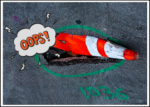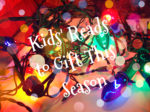Easy Classics & Current Hits
This coming year, I am scheduled to teach several classes of older and adult advanced beginners and I need some easy but satisfying classical arrangements. Plus, I have some intermediate teenagers in my studio who are motivated by a good mix of classical music and current pop music. So, I’ve been shopping and going through my files to find supplementary materials that will satisfy both crowds.
The first two collections are truly easy classical collections—much more so than similar materials such as those arranged by Dennis Agay. The second two are gonga pop arrangements for ipod loving teens.
Really Easy Piano: Classical: 36 Popular Pieces, Wise Publications
This volume contains a great selection of 36 well known symphonic, opera, choral, and piano pieces from Dowland and Vivaldi to Debussy and Faure. I personally love the fact that the harmonies are written in pop-style above the notation. The inclusion of these chords opens the door for improvisational experiments done with minimal fuss and within my class time budget.
There are background notes and tips and hints for each piece. The music is printed in clear readable font. Articulation marks include staccatos, tenutos, and slurs. Dynamic markings are clear and appropriate. Overall, the editors successfully kept distractions to a minimum and made sure that the pianist encounters only one challenge at a time.
The music is reasonably full sounding for the level of simplicity. In some pieces the rhythm has been changed from 16th to 8th notes or otherwise altered. Finger numbers are provided when needed and do not crowd the notes. If using this book with older adults, you might actually have to write the numbers in a bit bigger.
Overall, there is much to like here.
The Big Book of Classics For Easy Piano, Minstrel Press
The editors have grouped the 50+ selections in this book by era; Baroque, Classical and Romantic. The arrangements are reasonably satisfying if a bit more complicated than in the volume discussed above. There are running 8th notes throughout Corelli’s Sarabande and dotted 8th-16th combinations in Haydn’s Serenade, for instance.
Perhaps because the pieces are a little less simplified, they are notated big-note style. There are very few finger numbers to help the beginner negotiate some tricky bits such as the broken octave accompaniment in Bach’s Air from Orchestral Suite No. 3. Slurs are only used in pieces from the Classical Era. This really leaves a beginner high and dry and prone to musical run on sentences.
The omission of fingering and slurs and, by the way, DYNAMICS!? opens up windows of opportunity for discussion, problem solving, and teaching creativity. On the other hand, all that must be balanced against the possibility of students success on their own, my classroom time budget and the need to fill in people who are inevitably absent during the aforementioned creativity, problem solving, and discussion.
Current Hits & Chart Hits, Mona Rejino arr., Hal Leonard
The days when pop piano music sounded nothing like the real thing and/or were horribly out of date are over! These two volumes deliver the essence of each song at an intermediate playing level and are really satisfying. OK, I admit that I had to get on to YouTube to hear the real things!
These are truly intermediate arrangements. Students need fine reading skills, a well developed sense of the beat, a feel for syncopation, and a good ear. Intermediate arrangements or no, these pieces can get complicated. Often the right hand handles two voices and/or the left hand fills in for both the drums and guitar or bass. Pieces such as Bad Day, Home, and Bleeding Love require real attention to and an ear for voicing in order to let the melody shine.
Generally, the melodies are rhythmically notated so that they are both easily read and accurate. In some cases, the student will again need their ear to find the right melodic sound. Bubbly and Boston are each written in straight 8ths but need to be swung. The songs Home, Everything and Put Your Records On, require that the ear be used to bend the rhythms just as the pop artist would.
These books are definitely keepers and the good news is that Mona Rejino has quite a few other excellent volumes out there. The other good news is that all the voicing, rhythmic, and listening skills required in these non classical pieces are also required in classical repertoire.


